I can’t help but get a good chuckle whenever I talk to someone new and the topic of my small farm happens to come up. Immediately people go right to “oh so you have like chickens or something”? Then my response is “yeahhhhhh chickens for meat, and turkeys, and pigs, and dairy goats. We don’t buy meat.” This is usually the point that their eyes start to bug out when they realize I am more hardcore than their image of a chicken coop with half a dozen laying hens. Now I can officially add sheep to the list of my menagerie, because we welcomed our first lambs to the homestead!
If you pay close attention to my instagram account, you might be like wow wait, I thought she was doing this next year? Spring of 2020? You are correct, that was the plan! But, things don’t always go as planned around here. We have been actively clearing about a 1.5 acre section of woods to convert into silvopasture. The plan was to have it all ready to seed by the time the weather was warm enough this spring, and then let it grow and get established before putting sheep on it the following spring. Well, things are going according to plan, and we have been so focused on clearing and getting things prepped that I don’t think we thought ahead to how we would maintain the pasture grasses this year!
Once the newly seeded pasture grasses take hold and really establish a strong root system (~8 weeks with good weather) in order to encourage vigor and strong growth you want to cut it or graze it properly. Given our extremely rough and rocky New England landscape there is no way of mowing and bagging it at all. So, this would leave me with the only option of weed eating it, and then going back and raking up all the cut grass to prevent it from mulching and killing the growing grass underneath it. Weed eating and racking an acre and a half every week on top of everything else going on around here? NO THANK YOU!
The other option was to rotate my herd of dairy goats around the new pasture. But, this would mean I would have to move them out every morning after milking and put them back in the barn at night. My mornings are already rushed trying to get everything done before work, I can’t possibly add moving my goats to that list. Plus, goats are browsers not grazers, so they wouldn’t do the best job of mowing down the pasture grass like sheep would.
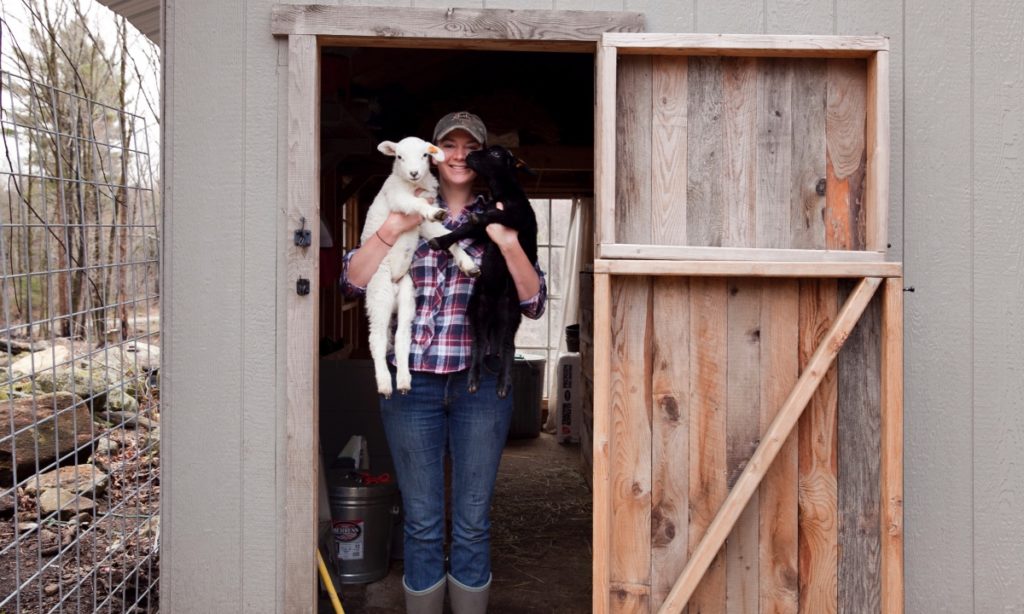
Enter the Sheep
After assessing the situation and knowing it wasn’t feasible or desirable to be weed eating and raking our new pasture all summer and fall, we decided that we were going to bite the bullet and get the sheep this year. Because they truly are the best option for our terrain.
Luckily for me, one of my customers for my “real job” happens to raise Katahdin sheep. He breeds for the sole purpose of selling the lambs for the Easter market, but I figured he would be a good first call to make anyway. Double my luck, it turns out that not only did they breed late and miss the Easter market completely, but he had an incredibly fertile year and almost every ewe threw triplets for him. With triplets being hard for a single ewe to nurse, they have been pulling the third baby and bottle feeding. He is overrun with lambs that he doesn’t have a direct market to sell into, and more bottle babies than him and his wife are able to handle on top of everything else. So, I took two off of his hands for him!
Being that we are getting the lambs so young, they will need more care and attention than if they were weaned. I will be giving them multiple bottles a day to supplement as they transition to hay. I certainly have plenty on my plate as it is, but the way I see it is I would rather dote on and care for lambs now, if that saves me an entire summer and fall of weed eating and raking pasture. I am already going down to the barn a lot anyway due to it being kidding season, so what’s one more chore?
Right about the time that they are big enough to be raised outside of the temporary area we have for them in the goat pasture, our lawn should be tall and thick enough that it needs a good mowing. Until the pasture grass is established and ready for them to start grazing, we will rotate them around our yard with our polywire netting as our lawn mowers, and supplement with some hay if need be.
Why Katahdins?
Just like when you raise any animal you have to decide on a breed! Different breeds have different benefits, so why out of all of the different breeds of sheep did we settle on Katahdins?
- They are a hair breed: Katahdins are a hair breed of sheep which means they do not produce the thick layer of wool that requires shearing. Although this first round of lambs wouldn’t get old enough to require shearing if they did produce wool, we are planning on having our own ewes for breeding stock. I have absolutely zero interest in shearing for wool, so a hair breed is ideal for us!
- They are hardy: Despite not having a thick wool coat, they do develop a thicker hair coat in the winter and shed it in the summer. They are incredibly hardy and easy keepers during our cold winters, and are able to withstand temperatures of hot summers.
- Their meat flavor is mild: If you haven’t gathered this by now, Katahdins are raised for their meat. Compared to other breeds of sheep they are renowned for their mild tasting meat (as opposed to being a tad gamey)
- Ideal for pasture models and naturally more parasite resistant: Sheep are an ideal animal for pasture as they graze the grass like clockwork 2-3″ high. Meaning, they will not chew it down so low that it kills the grass (this is assuming you use a proper grazing model). They chew it down just low enough to encourage regrowth while fertilizing the soil with their manure. Rotational grazing of sheep is one of the best things you can do to organically manage pastures. Katahdins are also much more resistant to internal and external parasites than wool breeds.
- Easy lambing and good mothers: Having breeding stock for our sheep that is pretty self sufficient is an absolute must for us. Between Big Marie and the goats that require a bit more help and post birthing care, I really didn’t want to add another animal to my list that requires so much assistance. Katahdins are renowned for their easy lambing with high birth weights even in the middle of a freezing winter, as well as being amazing mothers. While I will certainly keep an eye on our mothers when they are close to lambing, this characteristic is very desirable as it allows me to be more hands off. I have enough mamas I need to help!
- Docile and mellow temperament: While everything I have heard and read says that sheep are much more mellow and relaxed than the crazy goats I am used to, Katahdins came highly recommended to me as being particularly docile and mellow. People I have spoken to rave about how they are just an all around joy and are extremely easy keepers. This was a no brainer!
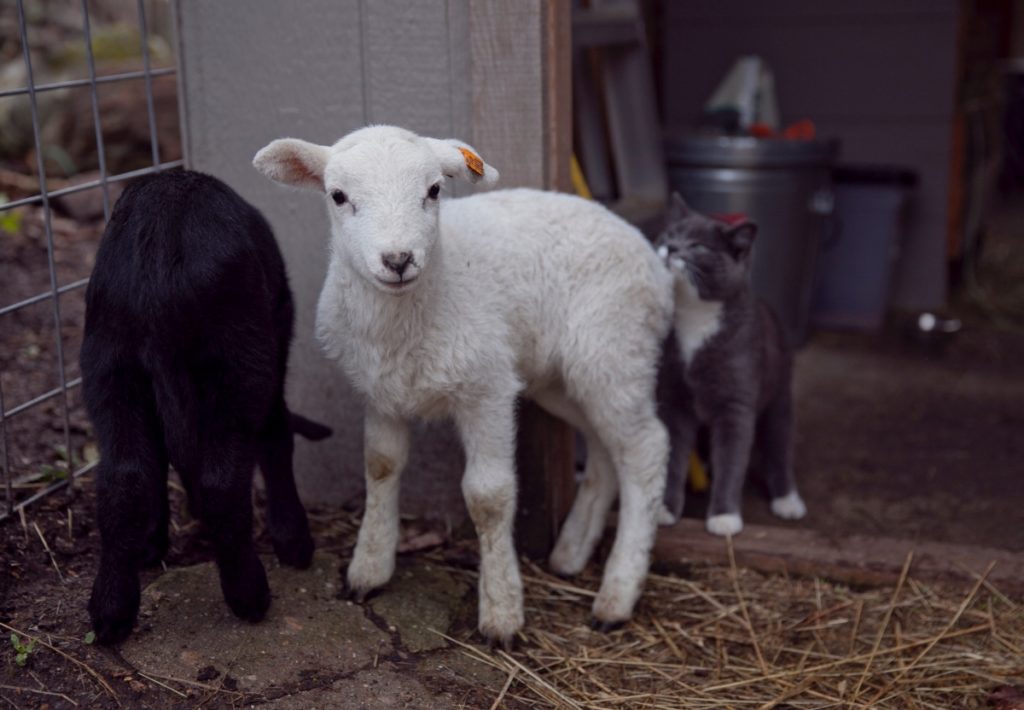
I am very excited to be entering the world of sheep. I can’t wait to see what they do to improve our new pasture and soil, as well as just watch them graze from my kitchen window and patio! And of course, the delicious grass fed lamb that is in our future as well!
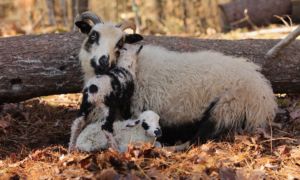
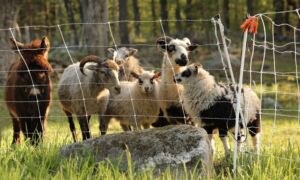
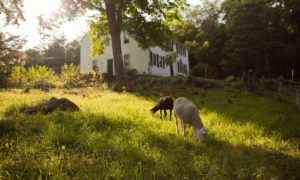
Pingback: How We Made Sheep Pasture out of Woods | The Modern Day Settler
I am looking to buy some Katahdin sheep for my farm.my daughter and son had them on there little farm and I fell in love with them.if you are looking to sell a couple I’m very interested.
We don’t have any- Bonnie and Clyde were our trial run katahdins and we butchered them in the fall for the freezer.
Pingback: How To Freeze Fresh Corn – The Modern Day Settler
Pingback: Icelandic Sheep for Sustainable Meat - The Modern Day Settler